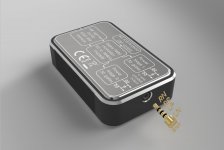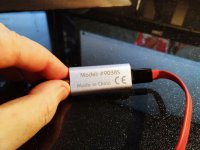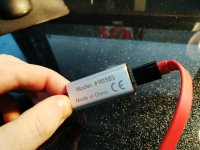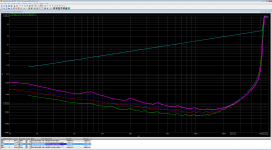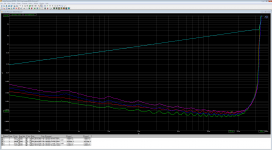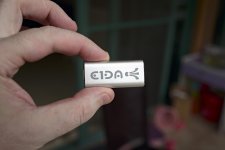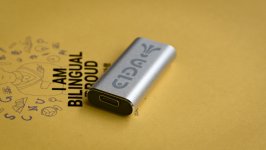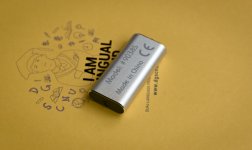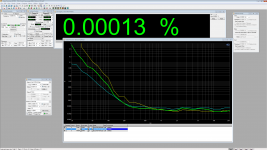Tomorrow I'll send it to the USA for review.
Will this be reviewed on audiosciencereview? That's a good place to get some interest.
If anyone wishes to try the Android App, APK is here hptoy(051219_1).apk — Yandex.Disk
Without HW connected the App works in Demo mode.
Without HW connected the App works in Demo mode.
Hi IVX,
You are selling these for $50? Does it need special drivers? What is max output voltage Vpp? Couldn’t tell if you are using step up DC-DC as I know my HE400i’s need more than 5v to come alive.
Looks very nice.
Cheers,
X
You are selling these for $50? Does it need special drivers? What is max output voltage Vpp? Couldn’t tell if you are using step up DC-DC as I know my HE400i’s need more than 5v to come alive.
Looks very nice.
Cheers,
X
Hi xrk971, huh, not selling yet but still fighting/changing stupid suppliers 😉 I hope will pass thru that quite soon anyway.
Yesterday I sent the sample to Z-review, no idea what I'll do if people will ask me where to buy the toy if I still have no amazon/ebay shop. Well, even not bad engineer not always good manager ))
PowerDAC V2, I think you talk about it, doesn't need any drivers for Windows(including my W7 64, the system had thought a minute and next reported that E1DA SPDIF interface is ready to use), Mac, IOS, Android or Linux(didn't try but should be fine as Mac does).
PowerDAC uses direct USB 5VDC rail with extensive filtering by 5000uF organic-polymer caps (just one-two mOhms ESR!) and lots of MLCC. Actually, this is one of the reason why I gonna sell that just for $50.
The peak to peak output voltage is 5V ideally i.e. with USB Y-splitter to get stream form the smartphone but power from powerbank or few amps charger and maybe 100ohm load. With normal PC USB2 I didn't see higher than 4.8Vp-p. BTW, some ports are stronger vs others, no idea why, and it is not specified mother-board manual. I believe I showed the normal USB2 1kHz power vs THD sweep here already for 16ohm THD+N=1% at 580mW, 32ohm at 320mW. Pretty much the same result for a tiny one #9038S: 340mW@32ohm i.e. 3.4VRMS=4.8Vp-p, and 550mW at 16ohm.
PS: what do you think about my output interface explanation? See attached 😉
Yesterday I sent the sample to Z-review, no idea what I'll do if people will ask me where to buy the toy if I still have no amazon/ebay shop. Well, even not bad engineer not always good manager ))
PowerDAC V2, I think you talk about it, doesn't need any drivers for Windows(including my W7 64, the system had thought a minute and next reported that E1DA SPDIF interface is ready to use), Mac, IOS, Android or Linux(didn't try but should be fine as Mac does).
PowerDAC uses direct USB 5VDC rail with extensive filtering by 5000uF organic-polymer caps (just one-two mOhms ESR!) and lots of MLCC. Actually, this is one of the reason why I gonna sell that just for $50.
The peak to peak output voltage is 5V ideally i.e. with USB Y-splitter to get stream form the smartphone but power from powerbank or few amps charger and maybe 100ohm load. With normal PC USB2 I didn't see higher than 4.8Vp-p. BTW, some ports are stronger vs others, no idea why, and it is not specified mother-board manual. I believe I showed the normal USB2 1kHz power vs THD sweep here already for 16ohm THD+N=1% at 580mW, 32ohm at 320mW. Pretty much the same result for a tiny one #9038S: 340mW@32ohm i.e. 3.4VRMS=4.8Vp-p, and 550mW at 16ohm.
PS: what do you think about my output interface explanation? See attached 😉
Attachments
Last edited:
markus91, you can take a look to the TAS5558 datasheet, this is typical for Ti not too flexible DSP implementation. Probably I could find some tricky way to apply LPF 700Hz and mixdown LF content for crossfeed but I don't think if it is a really interesting feature yet. And actually, I can turn it on as C. Moy either J. Meier in my MPC-HC(as I noticed with #9038S it is better THD+N performer vs FB2000) player, didn't try Foobar2000 but I believe it has the same plugin, Neutron has it as well. All of them do that processing the same way, so I see not too many reasons to apply crossfeed ones more time in HW DSP.
I agree, Xfeed should be done in DSP domain.
I like the little interface explanation. If you sell the toy with that faceplate, that would be awesome. Reminds me of microwave boxes I used to use in the lab- “miniCircuits” I think. Very self explanatory and no instruction manual required.
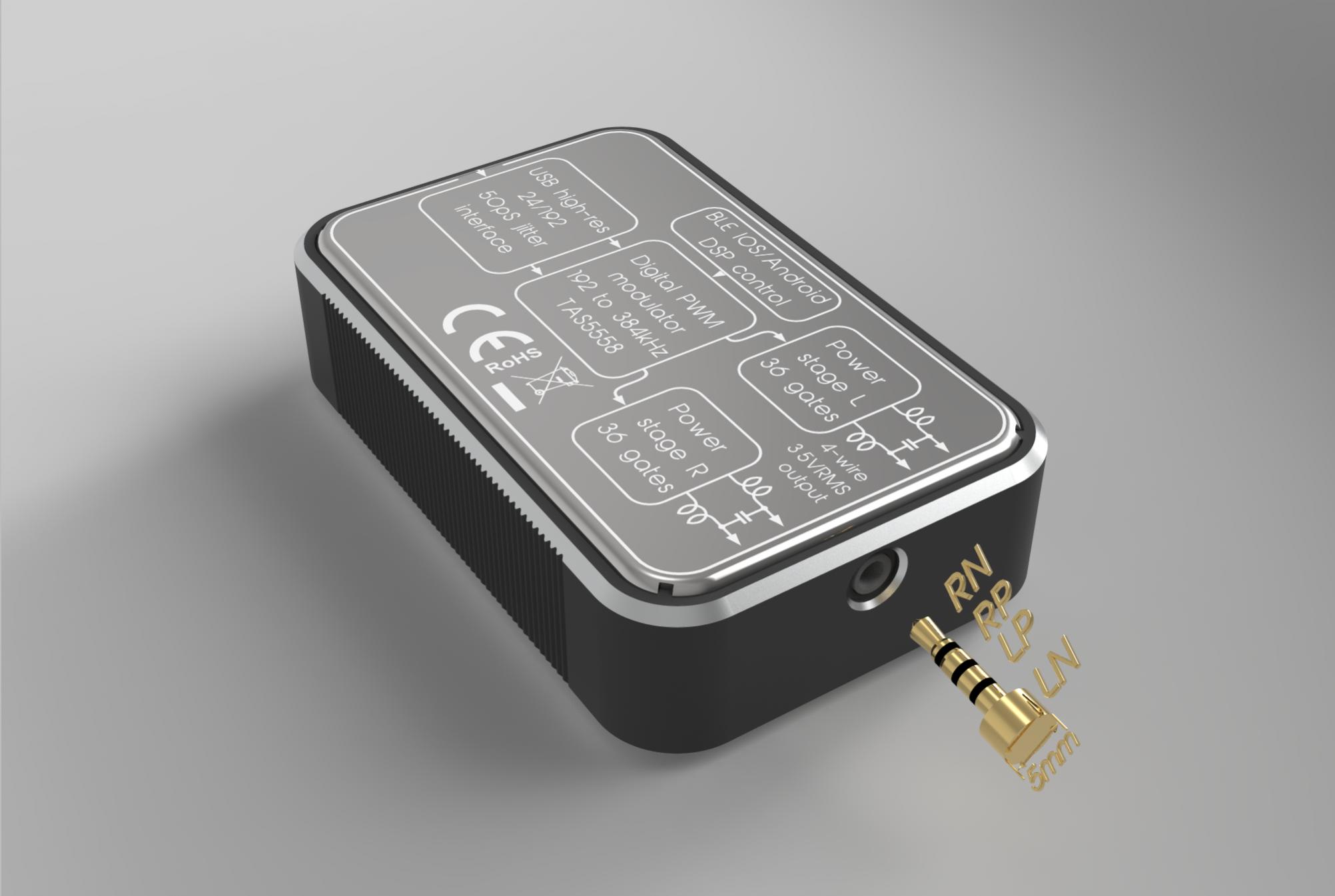
I would like to get one when you have them. If you need a web shop - try Etsy - it works for me quite well. Much better than eBay and Amazon for small low volume business.
I like the little interface explanation. If you sell the toy with that faceplate, that would be awesome. Reminds me of microwave boxes I used to use in the lab- “miniCircuits” I think. Very self explanatory and no instruction manual required.
I would like to get one when you have them. If you need a web shop - try Etsy - it works for me quite well. Much better than eBay and Amazon for small low volume business.
xrk971, thank you, I'll ask my wife to check Esty. And yes, this render is equal to actual laser print(I posted here pics week ago). BTW, I found the LED which exact match with tube's cathode color temperature 1100K, and PowerDAC V2 running warm too 😉
Keep us updated E1, I'll buy both products.
My PowerDAC V1 is a bit fragile with regards to the connectors.
(That's because of my wires, cables and soldering!)
My PowerDAC V1 is a bit fragile with regards to the connectors.
(That's because of my wires, cables and soldering!)
badboygolf16v, thank you for your trust! I will keep a log. Also, I want to tell the story how I deal with chinese suppliers, how I ordering some toolings and so on. Probably it is not really interesting for buyers-diyers but for such true DIY nerds like I'm, it could be spectacular info. The reason is nowadays any DIYer who has a good design project, can order small production bunch to check he's objectively so good or just imaginary. All simulation works today possible to implement on the laptop, whatever electronics, software either mechanics. No need to visit suppliers, all communications could be online etc. The cost of such an experiment is quite ok and comparable with your top DSLR camera which you bought only to ask yourself - why I bought it?? I don't say that it is easy but 1000x times easier than 20-40 years ago when famous today audio brands decided to become pro from their diy start. They had nothing, only pen, paper and passion, we have all and even more, so let's do something that worth our opportunities.
It is USB 24/192 DAC (ES9038Q2M one of the top-rated 32/768 DACs on the market) + HPAmp on the top-rated opamps AD8397. Output power the same as PowerDAC THD+N .0004% at half of the max power and 32ohm load, SNR -122dbA, dynamic range >120db. No one is even close to such performance/size on the market. Yes, it is trivial, I agree 😉
Attachments
Last edited:
Yeah, why not if to tie the GND to the USB-C with alligator clips, you'll get L+, L-, R+, R- and GND to arrange two standard balanced XLRs. Probably, if your amp is grounded the same as your PC/Mac/IOS/Android source device, and no drilling work in the next room, alligator clips would be redundant. Another way to use isolation trafo 600:600, I bought such permalloy-trafo for $10 on taobao, and quite happy with THD performances.
Attachments
Does the #9038S have standard TRS jack or dual diff TRRS?
BTW I tried to install the app from Google Play and it requires a couple of permissions: Location and access to media. Are these essential? I like to give apps as little access as possible!!
BTW I tried to install the app from Google Play and it requires a couple of permissions: Location and access to media. Are these essential? I like to give apps as little access as possible!!
- Status
- Not open for further replies.
- Home
- Vendor's Bazaar
- the TRUE digital one
